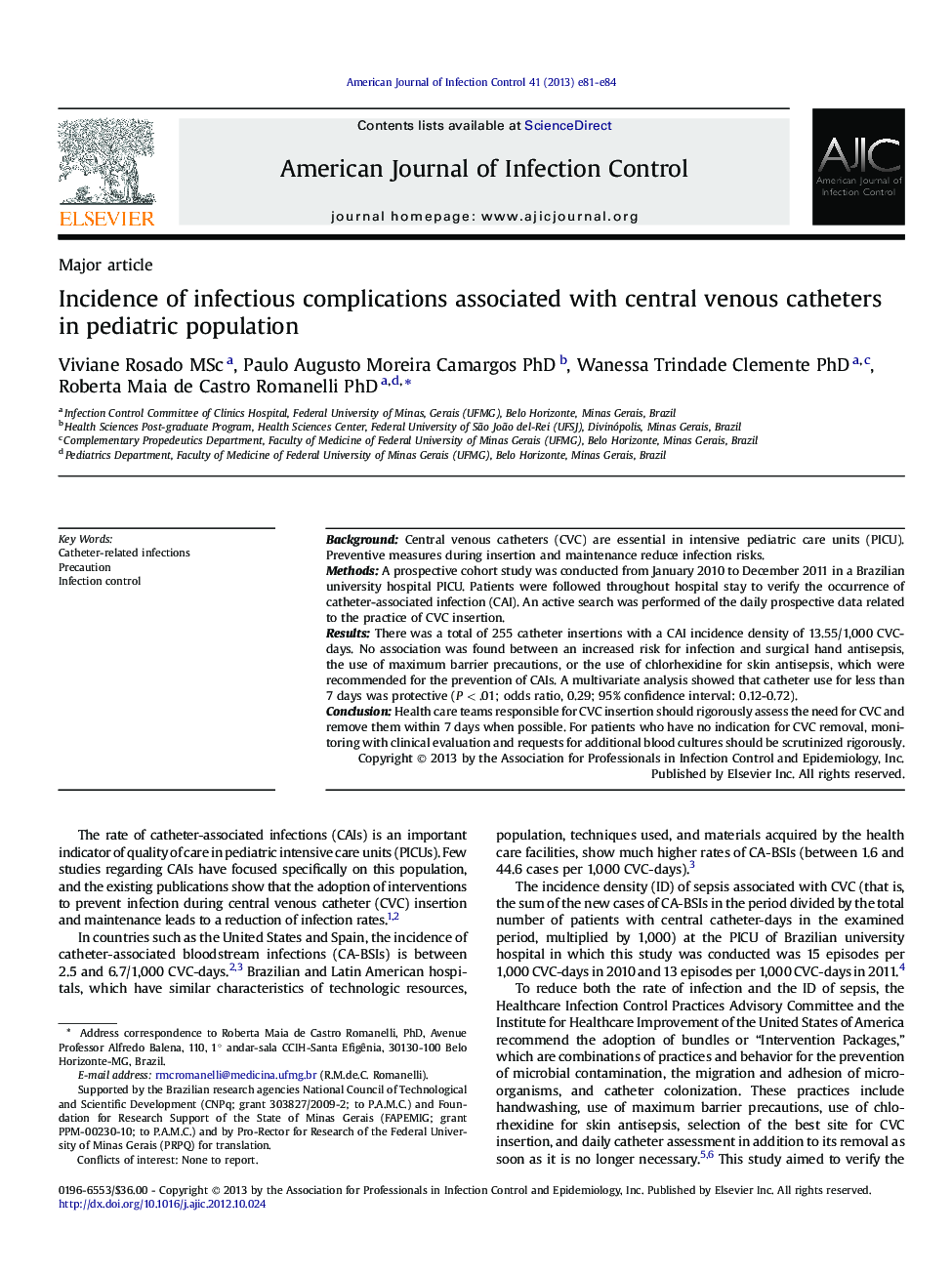| Article ID | Journal | Published Year | Pages | File Type |
|---|---|---|---|---|
| 2637389 | American Journal of Infection Control | 2013 | 4 Pages |
BackgroundCentral venous catheters (CVC) are essential in intensive pediatric care units (PICU). Preventive measures during insertion and maintenance reduce infection risks.MethodsA prospective cohort study was conducted from January 2010 to December 2011 in a Brazilian university hospital PICU. Patients were followed throughout hospital stay to verify the occurrence of catheter-associated infection (CAI). An active search was performed of the daily prospective data related to the practice of CVC insertion.ResultsThere was a total of 255 catheter insertions with a CAI incidence density of 13.55/1,000 CVC-days. No association was found between an increased risk for infection and surgical hand antisepsis, the use of maximum barrier precautions, or the use of chlorhexidine for skin antisepsis, which were recommended for the prevention of CAIs. A multivariate analysis showed that catheter use for less than 7 days was protective (P < .01; odds ratio, 0.29; 95% confidence interval: 0.12-0.72).ConclusionHealth care teams responsible for CVC insertion should rigorously assess the need for CVC and remove them within 7 days when possible. For patients who have no indication for CVC removal, monitoring with clinical evaluation and requests for additional blood cultures should be scrutinized rigorously.
